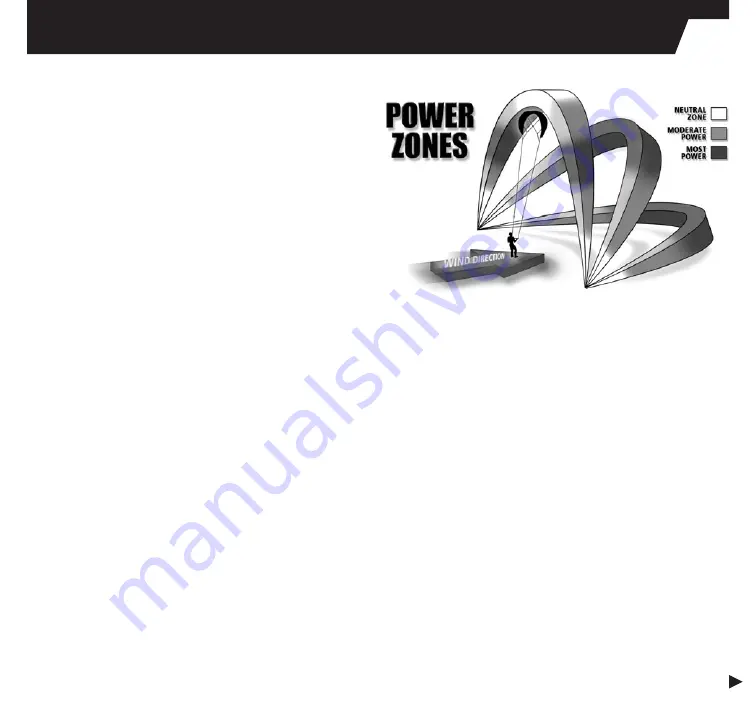
KITEBOARDING BASICS
KITE POSITIONS, ZONES & POWER
Neutral Position -
This is the position just above the pilot's
head in the sky. If the pilot levels out the bar, the kite will
gravitate to the neutral position. However, it is difficult and
dangerous to keep the kite in this position. Although in this
position the kite may feel steady and may feel like it has
the least amount of power or pull, it is also the position in
which on land the pilot is most susceptible to lofting. On
the water, the neutral position can be utilized to rest while
you reel in your board, but on land, we strongly suggest you
do not utilize the neutral position. After launching, it is best
to make your way to the water without delay. Do NOT linger
on land with the kite in neutral position. It is VERY
dangerous.
Neutral Zone -
This is the area that includes the neutral
position and the area to the left and right of the pilot. It
encompasses the most upwind or windward positions in
which to fly the kite. When flown here, the kite has less
power or pull than when it is in the power zone. However,
use caution when the kite is in this zone, especially when
on land, and especially in gusty wind conditions.
Power Zone -
This is the area in front and to the sides of
the pilot, but excluding the neutral position and zones. It is
the area in which the kite has the most power and pull.
When flown in this area, the kite can be powerful and
dangerous, so avoid flying your kite in this zone when
learning. Use extreme caution when flying the kite in this
zone.
Generating Power -
One way to generate power from your
kite is by steering your kite from low to high or from high to
low in the sky. The movement of your kite in the sky creates
lift, which creates power. Keep this in mind, especially
when learning. When bringing the kite from a low position
up to the neutral position, the movement of the kite
actually creates power and generates speed, so be
prepared.
When under-powered, you may use this ability of the kite to
your advantage by creating power and speed to get
planing.
It is important to understand kiteboarding's basic zones of
power before you launch a kite. Many of the accidents that
happen in kiteboarding happen on land, and many also
happen when kiteboarders put their kites in what is called
neutral position. Unfortunately, people often think that the kite
is stable in neutral position. However, wind fluctuates-it gusts
and lulls-and in neutral position, something known as lofting
can occur when wind fluctuates. When a kite luffs (or receives
less wind in its foil), the kite will move slightly away from the
pilot. When a gust hits, the kite receives a surge of power, and
often that surge of power is too much for a kiteboarder
standing with the kite high overhead. As a result, the
kiteboarder may be lofted (lifted) into the air. Lofting can be
serious, but you may reduce the chances of lofting by
understanding the power zones, and by avoiding putting your
kite in the neutral position while on land.
















































